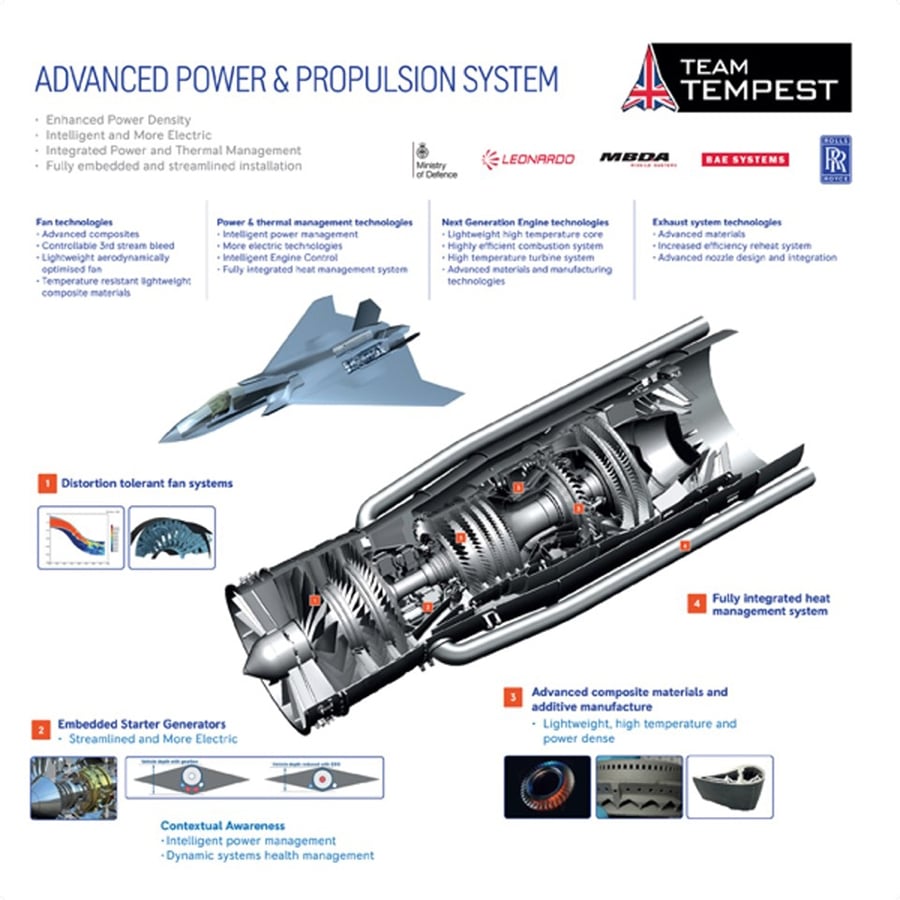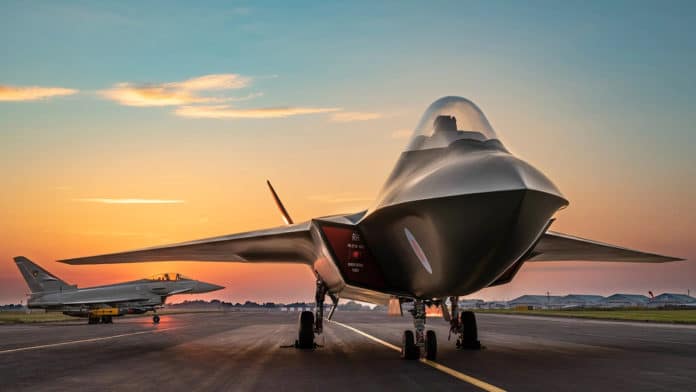Rolls-Royce, which works to develop electric and smarter technologies and provide more power to the aircraft, is developing the world-first electrical technology that will contribute to the UK’s Tempest next-generation fighter aircraft program.
The UK aerospace engine manufacturer has recognized that any future fighter aircraft will have unprecedented levels of electrical energy demand and thermal load in the future. Moreover, when managing all of these, the aircraft must have stealth features.
Rolls-Royce had already started to address the demands of the future before the launch of the Tempest program (expected in 2035). In 2014, the company embarked on designing an electric starter-generator, completely embedded in the core of a gas turbine engine. This initiative is now known as the Embedded Electrical Starter Generator or E2SG demonstrator program.
“The electric embedded starter generator will save space and provide the large amount of electrical power that warplanes will need in the future,” said Conrad Banks, Chief Engineer for Rolls-Royce Future Programs. “Existing aircraft engines generate power by means of a gearbox under the engine that drives a generator. The space required for the gearbox and generator on the outside of the engine makes it possible to accommodate moving parts and increase confusion, as well as to increase the fuselage, which is not desirable on a stealth aircraft platform.”

The aim is not only to provide the propulsion of an aircraft in the sky but also to provide the electrical power required for all systems in the aircraft, as well as to manage all the resulting thermal loads.
With the launch of the first phase of the E2SG program, Rolls-Royce has made a significant investment to establish an integrated power plant that will serve as a test center where gas turbine engines can be physically connected to a direct current grid. When the second phase of the project started in 2017, a second electric generator connected to the other spool component of the engine was commissioned. At this stage, an energy storage system in the electricity grid and the ability to intelligently manage the power supply between all these systems were introduced.
Electric machines with double spools allow combined use in the form of motors or generators. This results in a range of functional effects on the motor, including the transfer of power electrically between the two spools.
Another important technology currently under development is the Power Manager intelligent control system. This system, on the one hand, uses a variety of algorithms to make real-time and wise decisions about how to meet the aircraft’s current electrical demand. It also optimizes other factors, including fuel efficiency or engine efficiency by reducing engine temperature, to extend component life.
The company will continue to mature the electrical technologies demonstrated by the program throughout the Tempest program. The third phase of the program is expected to include a new thermal management system integrated into the overall system, as well as more electric motor accessories.
